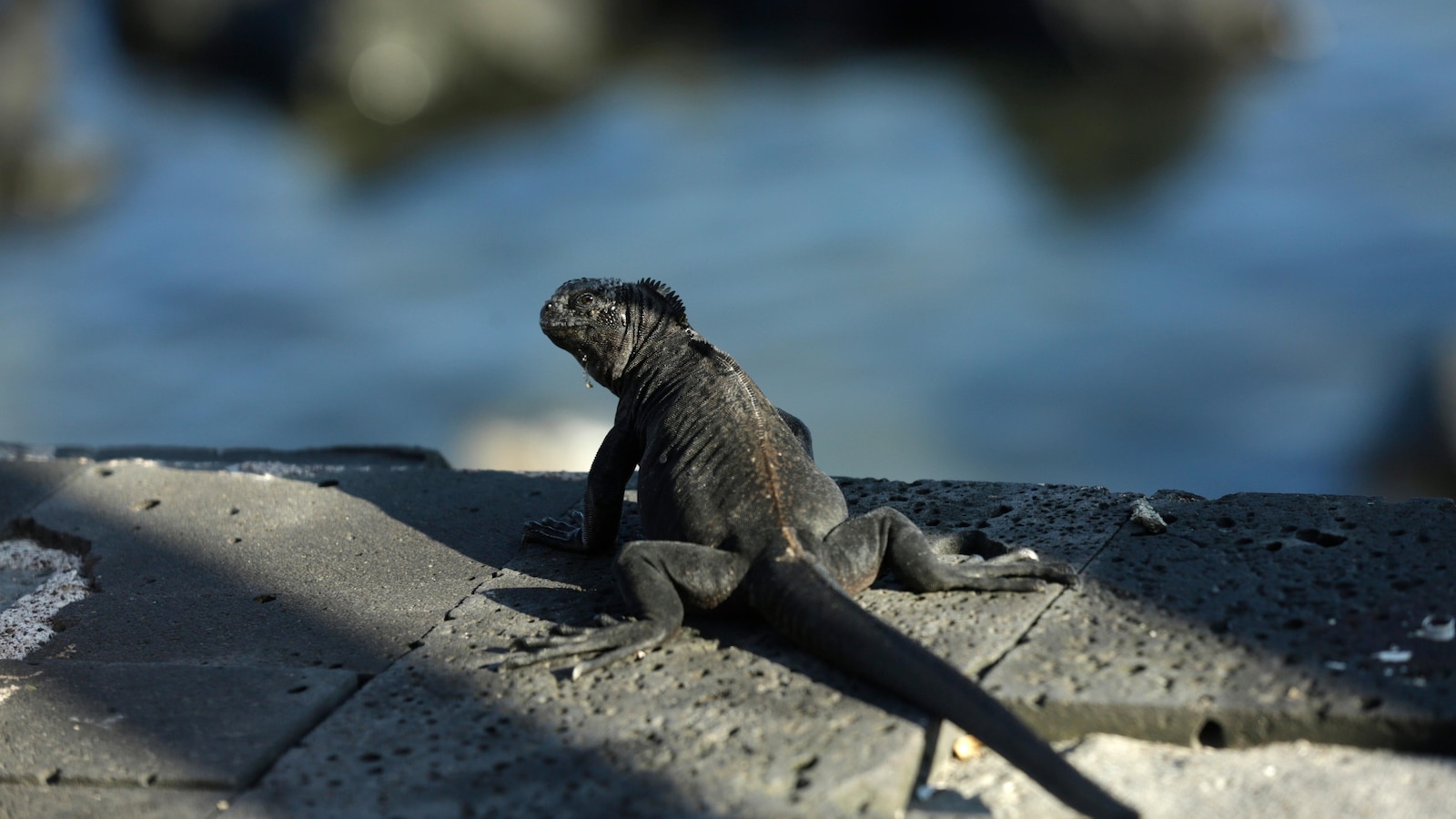US proposes zero new protections for traded wildlife at upcoming CITES CoP – Mongabay

Report on United States Participation in CITES CoP20 and Implications for Sustainable Development Goals
Executive Summary
This report analyzes the role of the United States in the upcoming 20th Conference of the Parties (CoP20) to the Convention on International Trade in Endangered Species of Flora and Fauna (CITES). It assesses the U.S. proposals against its historical leadership and examines the implications for global commitments to the Sustainable Development Goals (SDGs), particularly SDG 14 (Life Below Water), SDG 15 (Life on Land), SDG 16 (Peace, Justice and Strong Institutions), and SDG 17 (Partnerships for the Goals). A significant reduction in U.S.-sponsored proposals, especially the absence of any proposals to increase protections for threatened species, marks a departure from its traditional role and raises concerns about progress toward these global goals.
1.0 Introduction: CITES CoP20 and the Global Agenda
The 20th Conference of the Parties (CoP20) to CITES will convene in Samarkand, Uzbekistan, from November 24 to December 5. Representatives from 185 nations will deliberate on 51 proposals to regulate the international wildlife trade. This forum is critical for achieving key targets under the Sustainable Development Goals.
1.1 Alignment with Sustainable Development Goals
- SDG 15 (Life on Land): CITES directly addresses Target 15.7, which calls for urgent action to end poaching and trafficking of protected species of flora and fauna.
- SDG 14 (Life Below Water): The convention regulates trade in marine species, contributing to Target 14.4 concerning the sustainable management of marine ecosystems.
- SDG 16 (Peace, Justice and Strong Institutions): As a multilateral environmental agreement, CITES represents a key institution for global governance. Combating illicit financial and arms flows, strengthening the recovery and return of stolen assets, and combating all forms of organized crime, including wildlife trafficking, are central to Target 16.4.
- SDG 17 (Partnerships for the Goals): The cooperative framework of CITES, where nations co-sponsor proposals, exemplifies the global partnerships necessary to achieve sustainable development.
2.0 Analysis of United States Proposals for CoP20
For CoP20, the United States has sponsored only four proposals, the lowest number in 25 years. Critically, none of these proposals seek to “uplist” a species to provide greater protection from trade, a significant deviation from past U.S. engagement.
2.1 Submitted U.S. Proposals
- Guadalupe fur seal (Arctocephalus townsendi): Proposal to downlist from Appendix I to Appendix II, lowering trade restrictions.
- Peregrine falcon (Falco peregrinus): Proposal to downlist from Appendix I to Appendix II, lowering trade restrictions.
- Caribbean monk seal (Monachus tropicalis): Proposal to delete this extinct species from Appendix I, a procedural formality.
- American ginseng (Panax quinquefolius): Proposal to amend an existing regulation to exempt farmed plants from trade regulation.
2.2 Missed Opportunities for SDG Advancement
The U.S. Fish and Wildlife Service (USFWS) initially considered 249 potential proposals. However, numerous species identified as needing protection were not included in the final submission, representing a missed opportunity to advance SDG 15 and SDG 14. These include:
- Painted woolly bat (Kerivoula picta): Despite evidence of unsustainable trade for décor in the U.S. market and strong public support for listing, no proposal was submitted. This inaction fails to address a direct threat to a species in decline, undermining Target 15.7.
- California lady’s slipper (Cypripedium californicum): A tentative proposal to uplist this native orchid, heavily traded as an ornamental plant, was not advanced.
- Blue-spotted tree monitor (Varanus macraei) and American horseshoe crab (Limulus polyphemus): Other species in need of stronger trade protections that were not addressed.
3.0 Historical Context and Diminished U.S. Leadership
The United States has historically been a powerful voice for conservation within CITES, playing a foundational role in its creation and consistently championing science-based protections. This leadership has been a cornerstone of global partnerships (SDG 17) for biodiversity.
3.1 Past U.S. Contributions to Global Conservation
- Co-sponsoring proposals to ban the commercial trade of all pangolin species.
- Funding initiatives that reversed the decline of the Saiga antelope.
- Helping protect fin and sei whales from commercial whaling.
- Supporting numerous global initiatives to curb wildlife trafficking, directly contributing to SDG 16.
3.2 Comparative Analysis of U.S. Engagement
An analysis of the last ten CoP meetings (25 years) reveals a stark contrast between past and present U.S. engagement. The U.S. sponsored or co-sponsored an average of 10 proposals per meeting. The four proposals for CoP20 represent a significant step down, weakening the institutional strength (SDG 16) and partnership model (SDG 17) that CITES relies upon.
4.0 Conclusion: Implications for Global Biodiversity Governance
The reduced engagement of the United States at CITES CoP20 signals a potential retreat from its leadership role in global conservation. This shift has direct negative implications for the achievement of the Sustainable Development Goals.
4.1 Key Findings
- U.S. proposal submissions for CoP20 are at a 25-year low.
- For the first time in this period, the U.S. has not sponsored any proposal to increase protections for a species threatened by trade.
- This inaction represents a missed opportunity to protect species such as the painted woolly bat, thereby hindering progress on SDG 15.
4.2 Outlook
Conservation experts express hope that the United States will still contribute positively at CoP20 by supporting science-based proposals put forth by other nations. Upholding commitments to multilateral environmental agreements is essential for maintaining the integrity of strong global institutions (SDG 16) and fostering the partnerships (SDG 17) required to halt biodiversity loss and ensure a sustainable future for life on land and below water (SDG 15 and SDG 14).
Which SDGs are addressed or connected to the issues highlighted in the article?
Explanation
The article discusses international efforts to regulate the trade of endangered and threatened species through the Convention on International Trade in Endangered Species of Flora and Fauna (CITES). This directly connects to several Sustainable Development Goals (SDGs) focused on conserving biodiversity, protecting ecosystems, and fostering international cooperation and strong institutions to combat illegal wildlife trafficking.
-
SDG 15: Life on Land
This is the most relevant SDG, as the article’s central theme is the protection of terrestrial fauna and flora from unsustainable trade. It explicitly mentions numerous land animals and plants, such as elephants, rhinos, tigers, pangolins, painted woolly bats, and American ginseng, whose survival is threatened by the multibillion-dollar wildlife trade. The CITES convention is a primary mechanism for achieving the goal of halting biodiversity loss.
-
SDG 14: Life Below Water
The article also addresses the conservation of marine life by mentioning species like sharks, fin whales, sei whales, marine turtles, seahorses, and the Guadalupe fur seal. The discussions at the CITES Conference of the Parties (CoP) on setting limits or banning trade in these species are directly aimed at conserving and sustainably using marine resources.
-
SDG 16: Peace, Justice and Strong Institutions
The article highlights the role of CITES as a critical international institution involving 185 nations. It discusses the effectiveness of this convention, the importance of member states’ leadership (specifically the U.S.), and the need to “curb wildlife trafficking,” which is a form of transnational organized crime. This aligns with the goal of building effective and accountable institutions to combat illicit activities.
-
SDG 17: Partnerships for the Goals
The CITES framework itself is a global partnership for conservation. The article emphasizes the importance of international cooperation, noting how the U.S. has historically “worked with several countries to co-sponsor proposals.” The concern over the U.S.’s waning leadership role underscores the fragility and importance of such partnerships in achieving global conservation objectives.
What specific targets under those SDGs can be identified based on the article’s content?
Explanation
The article’s focus on combating the unsustainable and illegal wildlife trade allows for the identification of several specific SDG targets that are directly addressed by the actions (or inactions) described.
-
Target 15.7: Take urgent action to end poaching and trafficking of protected species of flora and fauna and address both demand and supply of illegal wildlife products.
This target is at the core of the article. The entire purpose of the CITES CoP meeting is to “rein in the unsustainable, multibillion-dollar wildlife trade, both legal and illegal.” The discussion of uplisting species to CITES appendices to ban or regulate trade is a direct action aimed at ending the trafficking of protected species like pangolins, tigers, and elephants.
-
Target 15.5: Take urgent and significant action to reduce the degradation of natural habitats, halt the loss of biodiversity and, by 2020, protect and prevent the extinction of threatened species.
The article states that for many species, “trade is the greatest threat to their long-term survival.” The efforts within CITES to provide greater protection to species like the painted woolly bat or the okapi are direct measures to prevent extinctions and halt biodiversity loss caused by overexploitation.
-
Target 14.4: By 2020, effectively regulate harvesting and end overfishing, illegal, unreported and unregulated fishing and destructive fishing practices…
This target is relevant to the marine species mentioned, such as sharks. The proposals at CITES to regulate or ban the international trade of shark fins and other parts are a form of “effectively regulating harvesting” to ensure that trade does not drive these species to extinction.
-
Target 16.4: By 2030, significantly reduce illicit financial and arms flows, strengthen the recovery and return of stolen assets and combat all forms of organized crime.
The article describes wildlife trade as a “$10-billion-a-year market” and repeatedly refers to “wildlife trafficking.” This illegal trade is a form of organized crime, and the international regulations discussed at CITES are a key tool for combating it and reducing the associated illicit financial flows.
-
Target 17.16: Enhance the global partnership for sustainable development, complemented by multi-stakeholder partnerships…
The article details the CITES convention as a global partnership. The analysis of the U.S.’s role, its historical leadership in co-sponsoring proposals with other nations, and the current “disappointment” at its reduced involvement directly relate to the health and effectiveness of this global partnership for conservation.
Are there any indicators mentioned or implied in the article that can be used to measure progress towards the identified targets?
Explanation
The article provides several quantitative and qualitative measures that can serve as indicators to track progress on the identified targets. These are used within the text to assess the level of commitment and the effectiveness of conservation efforts.
-
Number of proposals submitted by countries to CITES for regulating trade.
The article uses this as a primary indicator of a country’s leadership and commitment. It explicitly states, “the U.S. has sponsored only four proposals… the lowest in the last 10 CoPs — 25 years.” This metric can measure a nation’s active participation in strengthening global conservation governance (Target 17.16).
-
Number of species “uplisted” to higher protection levels (e.g., CITES Appendix I).
This is a direct measure of progress in protecting the most threatened species. The article notes with concern that for the first time, “none of the U.S.-backed proposals support ‘uplisting species,’ affording them greater protection from trade.” This indicator tracks action on Target 15.5.
-
Population trends of species affected by trade.
The article implies this indicator by citing specific examples: the recovery of the Guadalupe fur seal and peregrine falcon after protection, the “25% drop in numbers” of the painted woolly bat due to trade, and the extinction of the Caribbean monk seal. These trends are the ultimate measure of success for Targets 15.5 and 14.4.
-
Prevalence of illegal trade online and offline.
The article points to the “increasing number of species… entering trade online and offline” as a negative indicator. It cites a study that “found more than 800 dead bats for sale online over a three-month period,” which serves as a concrete data point for measuring the scale of illegal trafficking (Target 15.7 and 16.4).
Table of SDGs, Targets, and Indicators
| SDGs | Targets | Indicators Identified in the Article |
|---|---|---|
| SDG 15: Life on Land | 15.7: End poaching and trafficking of protected species.
15.5: Protect and prevent the extinction of threatened species. |
|
| SDG 14: Life Below Water | 14.4: Effectively regulate harvesting and end overfishing. |
|
| SDG 16: Peace, Justice and Strong Institutions | 16.4: Significantly reduce illicit financial flows and combat all forms of organized crime. |
|
| SDG 17: Partnerships for the Goals | 17.16: Enhance the global partnership for sustainable development. |
|
Source: news.mongabay.com

What is Your Reaction?
 Like
0
Like
0
 Dislike
0
Dislike
0
 Love
0
Love
0
 Funny
0
Funny
0
 Angry
0
Angry
0
 Sad
0
Sad
0
 Wow
0
Wow
0

















































:focal(1500,1000)/https://media.globalcitizen.org/a6/9a/a69a4720-d8a1-4715-b596-18738d03c05c/rotary_polio_hero_image.jpg?#)






/countries/sri-lanka/photo-credit---dmc-sri-lanka.tmb-1200v.jpg?sfvrsn=dc298bcc_1#)


















